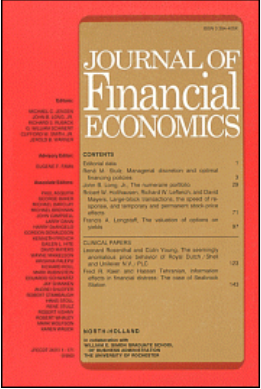基于中介的股权期限结构
IF 10.4
1区 经济学
Q1 BUSINESS, FINANCE
引用次数: 0
摘要
我们证明,基于金融中介的资产定价模型为股票期限结构和便利收益率的一组新条件矩提供了令人信服的解释。该模型的关键机制在于,中介机构杠杆约束的时变松紧度会导致风险价格出现显著的均值回归。在这一模型的指导下,我们设计了一种新颖的实证方法,从各类资产的横截面收益率中估算出这些约束的松紧程度(即相对松紧指数)。我们的研究结果证实,无论从经验上还是从数量上看,这一指标都极大地推动了股票收益率斜率和便利收益率的动态变化。本文章由计算机程序翻译,如有差异,请以英文原文为准。
Intermediary-based equity term structure
We demonstrate that a financial intermediary-based asset pricing model offers a compelling explanation for a new set of conditional moments of equity term structure and convenience yields. The model’s key mechanism is that the time-varying tightness of intermediaries’ leverage constraints drives significant mean reversion in the price of risk. This model guides us in devising a novel empirical methodology to estimate the tightness of these constraints (i.e., the Relative Tightness Index) from cross-sectional returns of various asset classes. Our findings affirm that this measure significantly drives the dynamics of equity yield slope and convenience yields, both empirically and quantitatively.
求助全文
通过发布文献求助,成功后即可免费获取论文全文。
去求助
来源期刊

Journal of Financial Economics
Multiple-
CiteScore
15.80
自引率
4.50%
发文量
192
审稿时长
37 days
期刊介绍:
The Journal of Financial Economics provides a specialized forum for the publication of research in the area of financial economics and the theory of the firm, placing primary emphasis on the highest quality analytical, empirical, and clinical contributions in the following major areas: capital markets, financial institutions, corporate finance, corporate governance, and the economics of organizations.
 求助内容:
求助内容: 应助结果提醒方式:
应助结果提醒方式:


